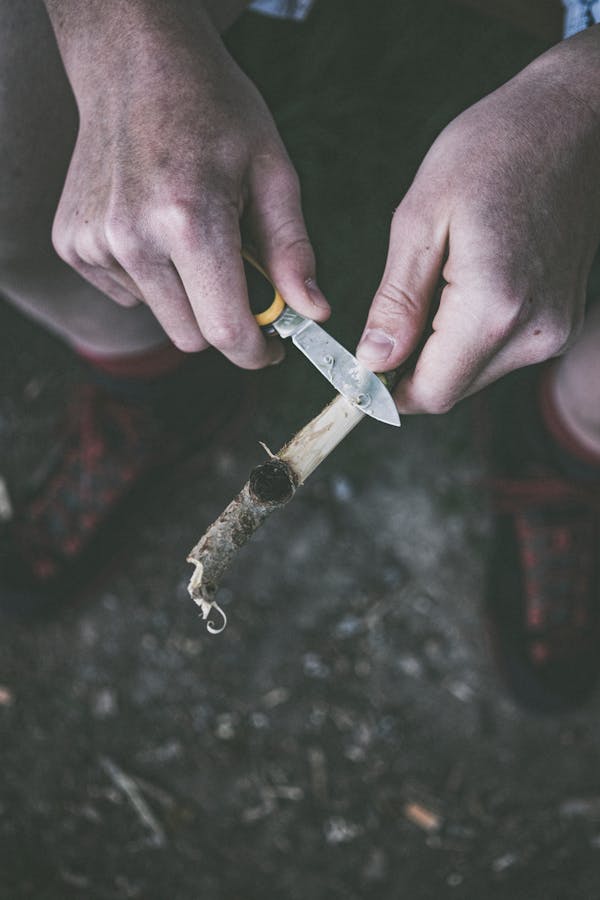Bushcraft is a skill set that allows people to live and thrive in the wilderness. It’s gained popularity in recent years thanks to survival experts such as Ray Mears.
Foraging is one of the most important aspects of bushcraft; knowing which plants and fungi are edible can help to supplement and even replace your diet in an emergency situation. Check out more at Bushcraft courses.
Survival
Bushcraft is often defined as the ability to live over extended periods in the wilderness using primitive tools and skills. This may include building a shelter, collecting and purifying water, tying knots, navigating the landscape and cultivating a close relationship with nature.
Survivalists tend to be a bit more focused on emergency situations and may prefer a bugout or everyday carry bag with prepared items like cotton balls with vaseline for fire making. Unlike the solitude seeking bushcrafter, survivalists often communicate with others while in the wild and plan to exit a situation if necessary.
Both survivalists and bushcrafters should use techniques that promote long-term sustainability, taking only what is needed from the environment. This is particularly important with respect to wildlife – never feed them, observe from a distance and store food and trash securely.
Shelter
While Bushcraft came into the public eye thanks to shows like Dual Survival and Survivorman, it’s actually much older than that. Those who practice it aren’t looking to survive an impending doom in the wilderness but enjoy living comfortably outdoors while appreciating nature and leaving no trace of their presence.
Shelter techniques include building debris huts and simple lean-tos. They also incorporate techniques such as creating fire reflectors and using a tarp to trap body heat in cold environments.

In addition, Bushcrafters usually have a strong traditionalist streak, preferring old customs and natural materials over modern gear. They may also use a variety of methods to collect water, such as a wicking bed of cattails or birch bark. Prepping is similar to Bushcraft in that it too focuses on long term solutions thought out ahead of time.
Food
Cooking for a group at camp can be difficult. It’s important to choose recipes that are easily scalable so you can feed your whole group, regardless of whether it grows or shrinks throughout the day.
The food techniques used in bushcraft cover a wide range of topics including foraging, trapping, fishing, and cooking. This is often combined with other survival skills like shelter-building, tool-making, firecraft, natural navigation, and medicine/health.
It has been brought into the public eye by shows such as Dual Survival and Survivorman that put experts into survival situations with little gear for a set period. However, many people who enjoy this type of outdoor living don’t enter a survival situation on purpose and live in balance with the natural environment. Instead they do it for fun and enjoyment.
Navigation
Navigation is a critical skill for those who enjoy outdoor wilderness activities like bushcraft and nature exploration. It is also a key component in gaining confidence and competence outdoors. It allows you to visit places less frequented, explore off the beaten path and truly revel in the natural beauty of our planet.
Navigation techniques can include using a map and compass, but bushcrafters often prefer to use natural methods. This includes availing of vantage points, paying attention to flora and fauna and even looking at the sun’s position in the sky for direction. Practicing these skills regularly also helps build a mental map of the area you are exploring. This is particularly useful if a survival situation should arise where GPS devices may fail due to moisture, cold or simply running out of batteries.
Hunting
Hunting is a key aspect of Bushcraft, as it allows for the provision of food. It can include primitive hunting techniques like trapping or spearing, or more modern methods such as using a bow and arrow or a survival knife.
Field dressing is also a crucial skill, which involves preparing the animal after it has been killed. This helps the meat cool down faster and prevents spoilage.
The Nordic Everyman’s Right grants northerners great freedom in the wilderness, but they still need to respect nature. For example, they are allowed to cut down dead trees, but they should never remove living ones from public or private land. They also need to avoid disturbing wildlife and always observe from a distance. This is to ensure the safety of the animals and protect the environment.